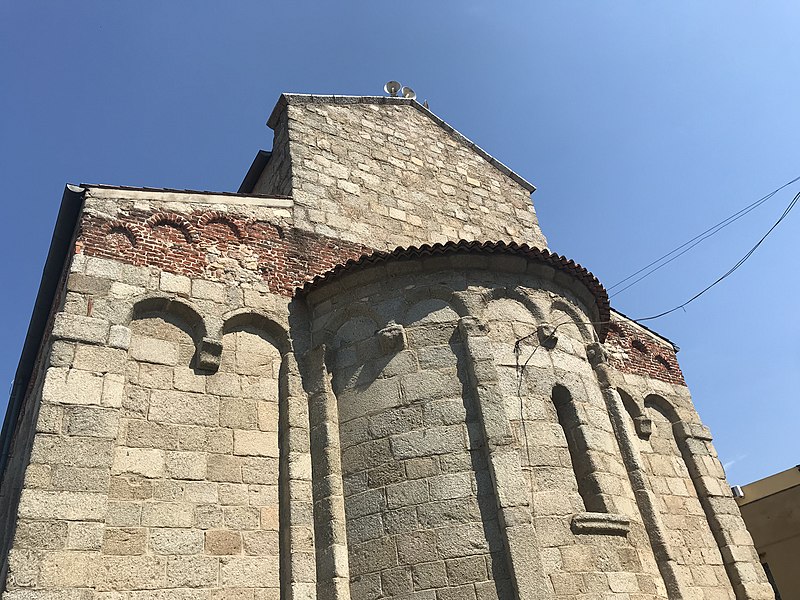


Olbia is the most important city of the Costa Smeralda, with over 60,000 inhabitants, it has become the most important center of North-Eastern Sardinia both for the presence of the airport "Costa Smeralda Airport" second in importance only to Cagliari, and for the large port where ships from all over the world now land.
If you are on holiday in north-eastern Sardinia, you have probably arrived in Olbia by ferry or by plane, you probably want to go immediately for a swim in one of the splendid beaches in the area, but if you are curious and want to take a nice walk in the city , Olbia will not disappoint you.
In the center of Olbia between Via Acquedotto and Via Torino it is possible to admire the ruins of the ancient Punic walls, where it is possible to glimpse one of the access gates to the ancient city.
Not far from the historic center and the Isola Bianca port, it is possible to visit the Archaeological Museum of Olbia, one of the few museums that houses the wrecks of important ancient ships. Not only that, it is also the only museum in the world to have masts and rudders dating back to Roman times.
The museum is located on the Peddone island. The structure resembles a moored ship and tells the story of the Sardinian city with particular attention to the periods of the Phoenicians, Greeks, Punics and Romans.
The Church of San Paolo is a truly special place! A characteristic church in the historic center of Olbia, composed of a rectangular base and three chapels, which form a cross. Built from the ruins of a Roman temple dedicated to Hercules in the late Middle Ages. Renovated and adapted to the Baroque style in the mid-eighteenth century.
The distinctive element is, without a doubt, the marvelous dome, built around 1939 and covered with polychrome majolica.
Inside it is possible to admire the frescoes by the painter Alberto Sanna, including the "Resurrection and angel musicians" in the apse, the "Via Crucis" on the side walls and the illustration of the "Sacraments" in the intrados of the dome.
Also not to be missed are the high altar and the polychrome marble balustrade, the choir and the Venetian-style wooden pulpit, two eighteenth-century wooden statues dedicated to the Sacred Heart and St. Francis.
The Basilica of San Simplicio is one of the few examples of Romanesque architecture in Sardinia, it is worth going to see it.
The church houses the relics of San Simplicio, martyr bishop and patron saint of the city and of Gallura. It is celebrated for an entire week, culminating on May 15 with the procession of the saint through the streets of the city.
The Basilica was built in the Middle Ages, when Olbia, at the time Civita, represented an important administrative center of the Giudicato di Gallura. It was here that the marriage between Lamberto Visconti and Elena di Gallura was celebrated, the first Sardinian woman to have the role of Judge.
Not to be missed are the precious architectural details, such as the beautiful decorated capitals or the traces of some red crosses painted on the pillars. The latter represent one of the rare testimonies of the ancient wall decorations.
Also interesting is the "hand of God" which supports the corbel of an arch, as if to recall God's support in the construction of the church.
Maybe you don't know that the Romans have also arrived in Sardinia!
In the industrial area of Olbia, in the locality of Sa Rughittula, you can admire some remains of the Roman aqueduct built between the 1st and 2nd century. d. C..
Built with the aim of transporting the water from Mount Cabu Abbas towards the center of the city, it is the best preserved aqueduct in Sardinia.
Not far away, on the other side of Via Mincio, it is also possible to admire a covered Roman cistern, divided into several rooms with barrel vaults and ventilation holes.
Olbia has numerous remains dating back to the Nuragic age. Among these, it is worth visiting the fascinating Pozzo Sacro Sa Testa. It is located on the SP 82 road that connects the city with Pittulongu, after crossing a small path.
This well is characterized by the typical geometric construction of sacred wells from the Nuragic era. There is a stairway between two walls of perfectly squared blocks which form a conical roof. The well is not accessible inside.
Dating back to 1300-1200 BC. the Nuraghe Riu Mulinu is formed by a central tower surrounded by a thick wall with two entrances. Given its strategic position, it is possible that the nuraghe played an important role in the defense of the city.
The use as a place of worship is not excluded: in fact, there is also a sacrificial pit where burnt bone fragments and ceramic finds were found: in addition to the nuraghe, it is worth taking this walk to enjoy a breathtaking view!
Not only Nuraghi in Sardinia, but also castles!
The Castle of Pedres represents one of the most characteristic excursions to do, especially out of season.
Perched on a small hill, to reach it you need to take a short path between the rocks.
In addition to the beautiful panorama of the Olbia plain, it is possible to admire the Castle of Pedres, formed by a wall, a tower and a rectangular building probably used for residential use in the past.
The Castle dates back to the period of the Giudicato di Gallura and to the Pisano-Aragonese domination during the rise of the Visconti family (1296 -1322).
Not far from the Castle of Pedres is the famous tomb of the giants, an ancient burial site from the Nuragic era.
Like the other similar tombs, it consists of a longitudinal structure covered by horizontal slabs and an exedra designed by vertical slabs.
